
The Majestic Crazy Horse Memorial
Explore the awe-inspiring Crazy Horse Memorial in South Dakota, a testament to Native American heritage and the largest mountain carving in progress.
The Crazy Horse Memorial in South Dakota is a monumental sculpture dedicated to the Lakota warrior, Crazy Horse. This incredible destination is not just a work of art; it is a tribute to Native American culture and heritage. Carved into the Black Hills, this colossal statue is one of the largest mountain carvings in the world. It stands as a powerful symbol of the strength and resilience of the Native American people. Visitors to the Crazy Horse Memorial can witness the ongoing effort to complete this grand sculpture, which began in 1948 by sculptor Korczak Ziolkowski. The site includes a visitor center, the Indian Museum of North America, and the Native American Cultural Center. These attractions offer a deep dive into the history, culture, and art of the indigenous people of North America. The memorial also hosts various cultural events and educational programs throughout the year. These activities provide an enriching experience for visitors of all ages, making it a must-visit for anyone interested in learning more about Native American history and culture. Whether you are there to admire the monumental sculpture, explore the museums, or participate in cultural activities, the Crazy Horse Memorial is sure to leave a lasting impression.
Local tips in Crazy Horse Memorial
- Visit early in the day to avoid crowds and have ample time to explore the site.
- Check the official website for special events and educational programs during your visit.
- Wear comfortable shoes as there is a lot of walking involved, especially if you want to explore the surrounding areas.
- Bring a camera to capture the stunning views and the progress of the sculpture.
- Consider taking a guided tour for deeper insights into the history and significance of the memorial.
The Majestic Crazy Horse Memorial
The Crazy Horse Memorial in South Dakota is a monumental sculpture dedicated to the Lakota warrior, Crazy Horse. This incredible destination is not just a work of art; it is a tribute to Native American culture and heritage. Carved into the Black Hills, this colossal statue is one of the largest mountain carvings in the world. It stands as a powerful symbol of the strength and resilience of the Native American people. Visitors to the Crazy Horse Memorial can witness the ongoing effort to complete this grand sculpture, which began in 1948 by sculptor Korczak Ziolkowski. The site includes a visitor center, the Indian Museum of North America, and the Native American Cultural Center. These attractions offer a deep dive into the history, culture, and art of the indigenous people of North America. The memorial also hosts various cultural events and educational programs throughout the year. These activities provide an enriching experience for visitors of all ages, making it a must-visit for anyone interested in learning more about Native American history and culture. Whether you are there to admire the monumental sculpture, explore the museums, or participate in cultural activities, the Crazy Horse Memorial is sure to leave a lasting impression.
When is the best time to go to Crazy Horse Memorial?
Iconic landmarks you can’t miss
Crazy Horse Tourist Center
Experience the rich heritage of Native American culture and the iconic Crazy Horse Memorial at the Crazy Horse Tourist Center.
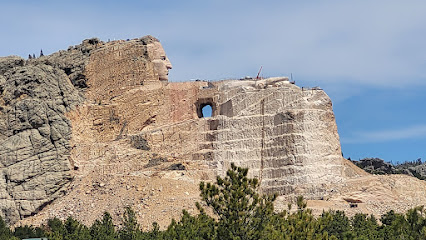
Crazy Horse
Experience the grandeur of Crazy Horse Memorial, the world's largest mountain carving honoring Native American heritage in the stunning Black Hills of South Dakota.
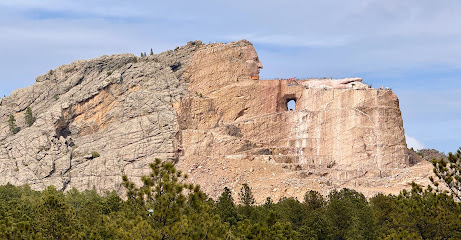
Unmissable attractions to see
Crazy Horse Tourist Center
Explore the rich heritage of the Lakota people at the Crazy Horse Tourist Center, home to the world's largest mountain carving and captivating cultural exhibits.
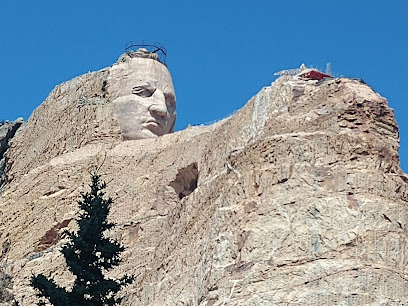
Bear Country USA
Discover the wonders of North American wildlife at Bear Country USA, a premier wildlife park in Rapid City, South Dakota, perfect for family adventures.
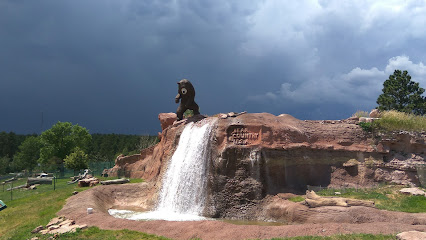
Black Hills National Forest
Explore the breathtaking landscapes and diverse wildlife of Black Hills National Forest in South Dakota, a top destination for outdoor adventure and natural beauty.
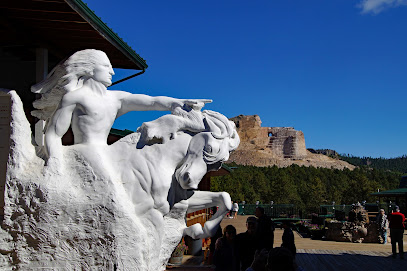
Cosmos Mystery Area
Discover the enchanting and mind-bending experiences at the Cosmos Mystery Area in Rapid City, South Dakota—where reality meets illusion!
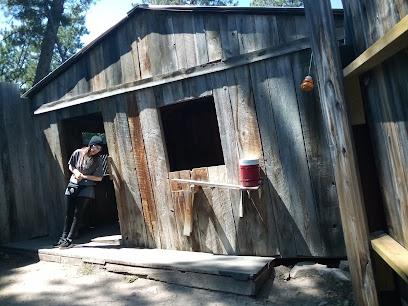
Rush Mountain Adventure Park
Experience the thrill of adventure at Rush Mountain Adventure Park in the stunning Black Hills of South Dakota, perfect for families and thrill-seekers alike.
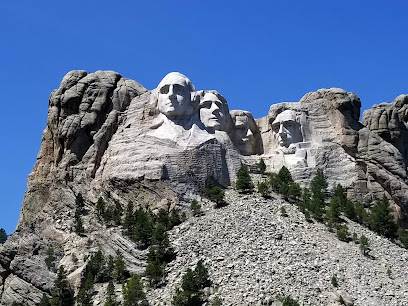
Cathedral Spires Trailhead
Discover the breathtaking Cathedral Spires Trailhead, a stunning hiking area in Custer, South Dakota, known for its incredible granite formations and scenic views.
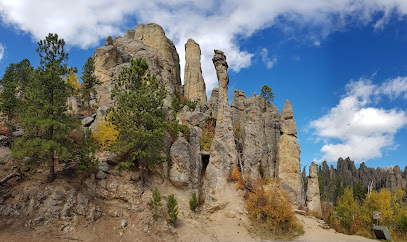
Black Hills Caverns
Explore the captivating beauty and geological wonders of Black Hills Caverns, a premier tourist attraction in Rapid City, South Dakota.
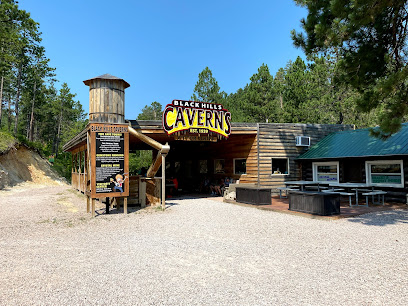
Museum @ Black Hills Institute
Explore the Black Hills Institute Museum, a treasure trove of fossils and artifacts in Hill City, South Dakota, perfect for history and nature enthusiasts.
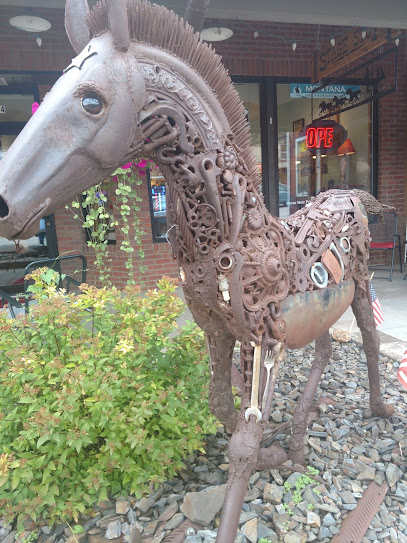
Buffalo Safari Jeep Tours
Experience the thrill of the wild with Buffalo Safari Jeep Tours in Custer, South Dakota. Adventure awaits in the heart of the Black Hills!
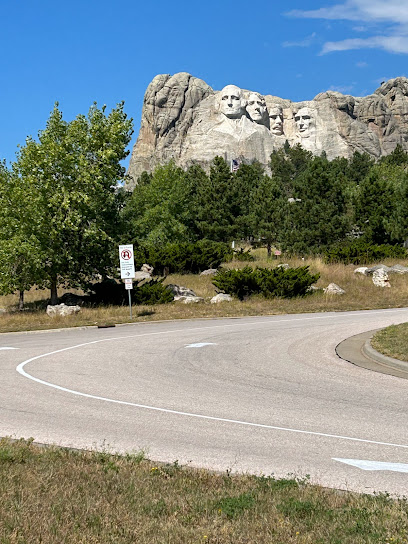
Doane Robinson Tunnel (Tunnel view of Mount Rushmore)
Experience the stunning views of Mount Rushmore through the historic Doane Robinson Tunnel amidst South Dakota's breathtaking landscapes.
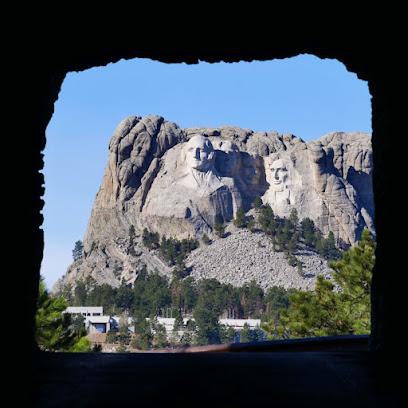
Bison Center
Explore the Bison Center in South Dakota - a captivating attraction showcasing the majestic bison and its cultural significance in the Great Plains.
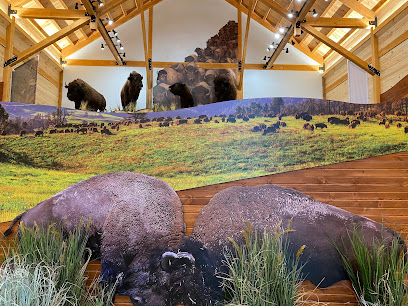
Black Hills Playhouse
Discover the Black Hills Playhouse - a cultural beacon in South Dakota where vibrant performances meet breathtaking natural beauty.
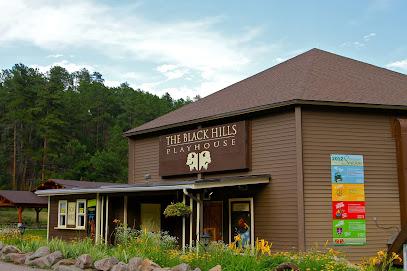
Welcome to Custer State Park Sign
Explore the breathtaking landscapes and diverse wildlife of Custer State Park, a top tourist attraction in South Dakota's scenic Black Hills.
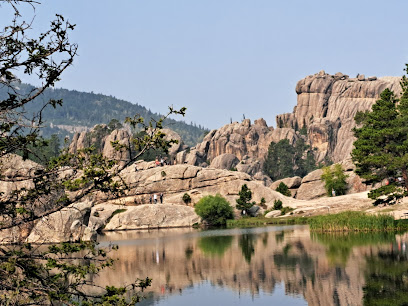
Keystone Museum
Explore the rich history and culture of Keystone, South Dakota at the Keystone Museum, a must-visit tourist attraction.

CCC Museum of South Dakota
Explore the legacy of the Civilian Conservation Corps at the CCC Museum of South Dakota, a captivating destination for history buffs and nature lovers.

Markets, malls and hidden boutiques
Prairie Edge Trading Co & Galleries
Explore Prairie Edge Trading Co & Galleries, your premier destination for Native American art, handcrafted gifts, and unique cultural experiences in Rapid City.

Mount Rushmore Gift Shop
Explore the Mount Rushmore Gift Shop for unique souvenirs, local crafts, and a glimpse into South Dakota’s rich heritage.
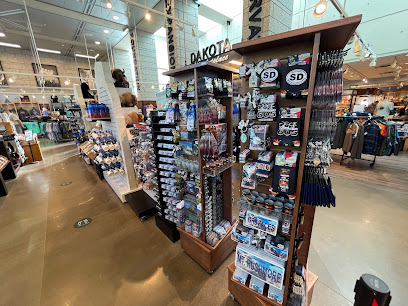
Claw Antler & Hide Co
Explore a treasure trove of Native American goods, collectibles, and unique gifts at Claw Antler & Hide Co in Custer, South Dakota.

Rock Shed
Explore the enchanting world of gemstones and fossils at Rock Shed in Keystone, South Dakota, a paradise for rock lovers and curious travelers.
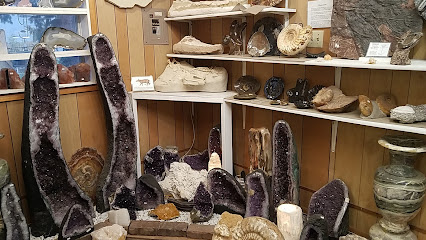
Dave's Rock Shop
Explore the enchanting world of geology at Dave's Rock Shop in Custer, SD, where unique minerals and fossils await every visitor.
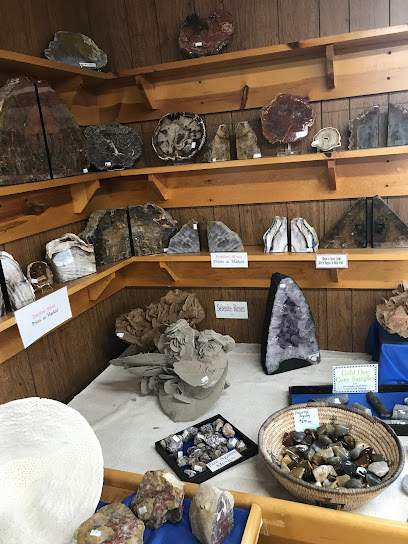
Ken's Minerals & Trading Post
Uncover the wonders of nature at Ken's Minerals & Trading Post, a unique rock shop in Custer, South Dakota, perfect for collectors and casual visitors alike.
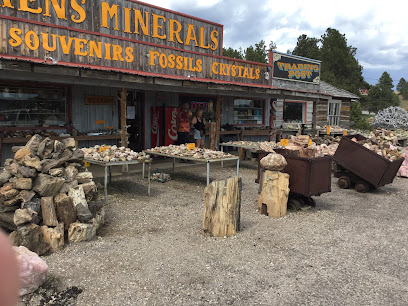
Jewel of the West
Explore Hill City's Jewel of the West for unique gifts, local crafts, and authentic Native American treasures amidst the stunning Black Hills.
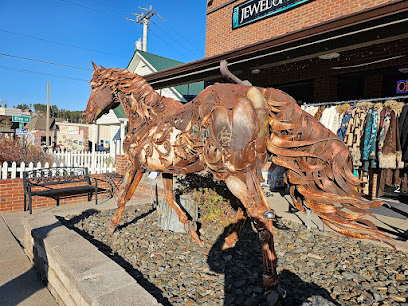
Dakota Stone Rock Shop/Not Dakota Stone Mining & Stone Supply
Explore the beauty of nature at Dakota Stone Rock Shop in Hill City, South Dakota, where rocks and minerals tell their own stories.
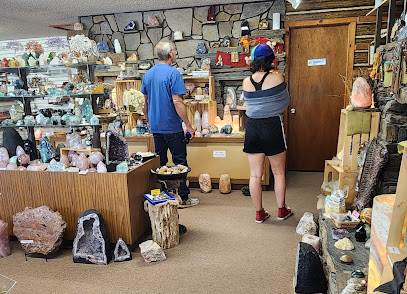
Coolidge General Store
Explore the unique offerings of Coolidge General Store in Custer, SD - a charming destination for local goods and unforgettable souvenirs.

South Dakota Outdoor Shop
Discover the ultimate destination for outdoor gear and expert advice at South Dakota Outdoor Shop – your adventure starts here.
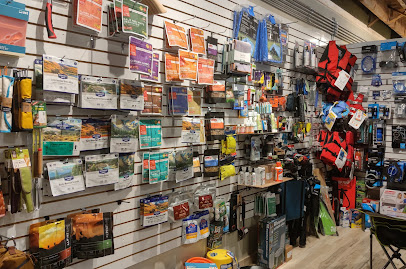
Sylvan Lake General Store & Eatery
Discover local treasures and adventure at Sylvan Lake General Store & Eatery, your gateway to exploring the stunning Black Hills of South Dakota.
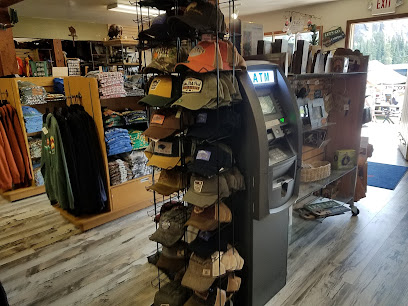
Wild Spruce Market
Explore Wild Spruce Market: Your go-to destination for organic groceries, local crafts, and a cozy atmosphere in Custer, South Dakota.

Boyds Antiques
Explore Boyds Antiques in Custer, SD - a vintage haven filled with unique furniture, collectibles, and rich stories waiting to be discovered.
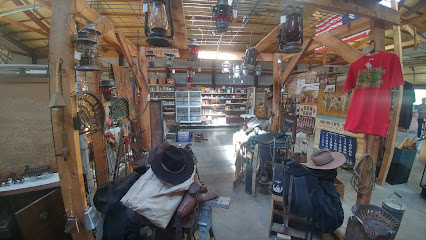
House of Scandinavia
Explore the enchanting House of Scandinavia in Rapid City, a treasure trove of authentic Scandinavian gifts and cultural delights.
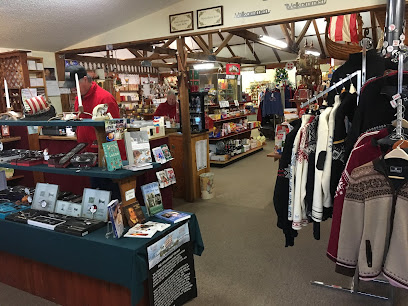
Holy Terror Antiques
Discover unique vintage treasures at Holy Terror Antiques, a must-visit destination for antique lovers and collectors in Keystone, South Dakota.
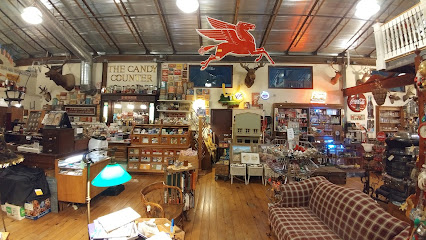
Essential bars & hidden hideouts
Black Hills Sauce & Dough
Experience the best of South Dakota cuisine at Black Hills Sauce & Dough, where unique beef and bison dishes await every food lover.
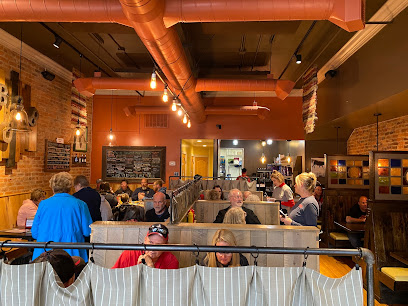
Buglin' Bull Restaurant and Sports Bar
Discover the lively Buglin' Bull Restaurant and Sports Bar in Custer, SD - a perfect blend of American cuisine and sports excitement.
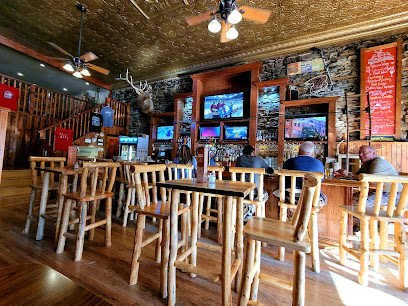
Mt. Rushmore Brewing Company & Pounding Fathers Restaurant
Experience South Dakota's rich flavors at Mt. Rushmore Brewing Company, a brewpub with craft beers and hearty meals in Custer.
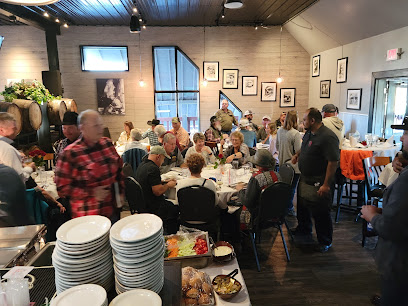
The Custer Wolf - Food & Drink
Experience authentic American flavors in a cozy atmosphere at The Custer Wolf, Custer's culinary gem amidst breathtaking landscapes.
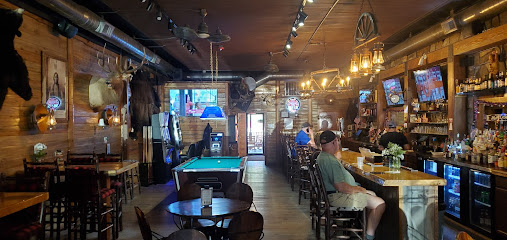
Begging Burro Mexican Bistro
Explore the vibrant tastes of Mexico at Begging Burro Mexican Bistro, where every meal is a celebration of authentic flavors and culinary artistry.
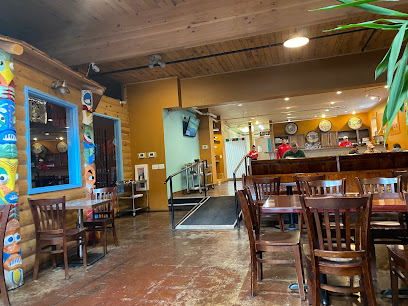
Bumpin Buffalo Bar and Grill
Experience delicious grill specialties and local wines at Bumpin Buffalo Bar and Grill, a family-friendly gem in Hill City, South Dakota.
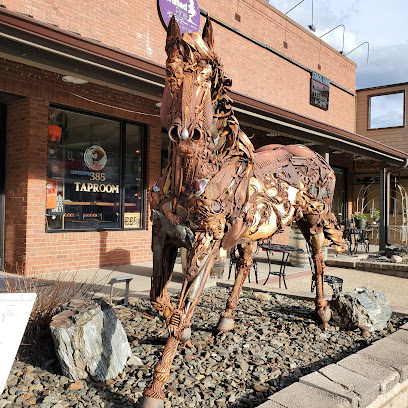
Chute Rooster
Experience the flavors of the Black Hills at Chute Rooster, a charming restaurant in Hill City, South Dakota, celebrating local cuisine with a Western twist.
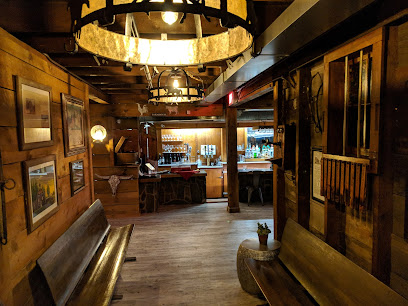
Calamity Jane Coffee Shop and Grill
Discover the charming Calamity Jane Coffee Shop and Grill in Custer, SD, where delightful coffee, delicious meals, and unique souvenirs await!
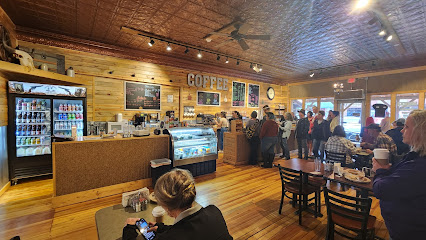
Sage Creek Grille - Now Open!
Discover the culinary delights at Sage Creek Grille in Custer, SD, where local flavors and a cozy atmosphere create a memorable dining experience.
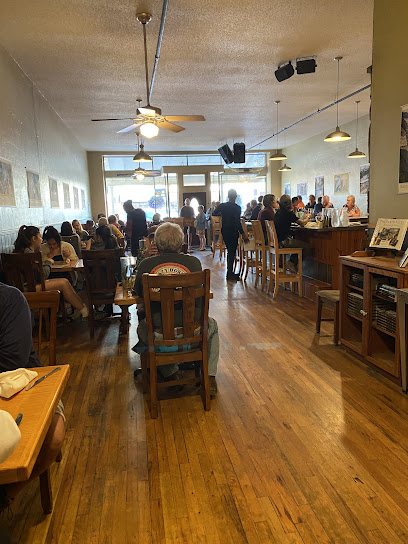
Red Garter Saloon
Discover the vibrant atmosphere of Red Garter Saloon in Keystone, SD, a historic bar and grill offering delicious food and local drinks.
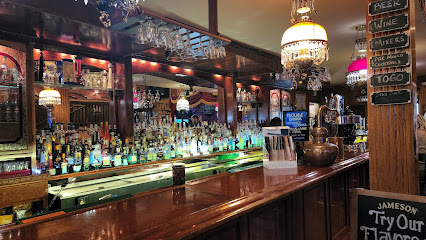
The Custer Beacon
Discover the heart of Custer, South Dakota at The Custer Beacon - where live music meets delicious dining for an unforgettable experience.
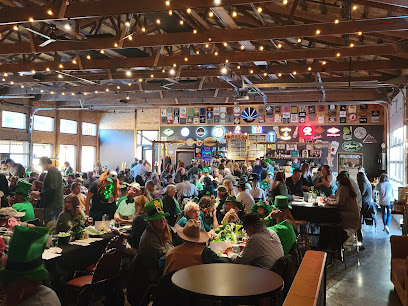
Halleys West
Discover the local flavors of Halley's West in Keystone, SD, where hearty American grill cuisine meets charming hospitality in the heart of the Black Hills.
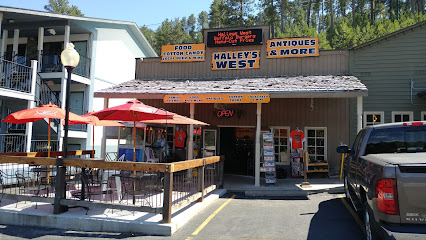
Carvers' Café
Experience delightful dining at Carvers' Café, where local flavors meet breathtaking views near Mount Rushmore.
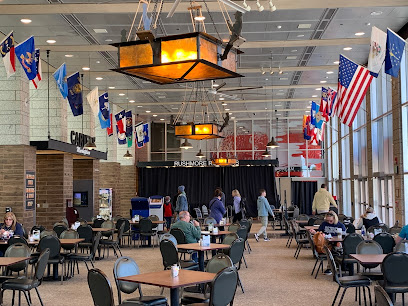
Grapes & Grinds
Discover the perfect blend of coffee, sweets, and gifts at Grapes & Grinds in Keystone, SD – a must-visit for all travelers!
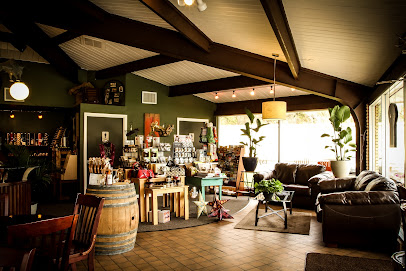
The Frontier Bar & Grill
Discover The Frontier Bar & Grill – a family-friendly American restaurant in Custer, SD, offering delicious food and a warm atmosphere.
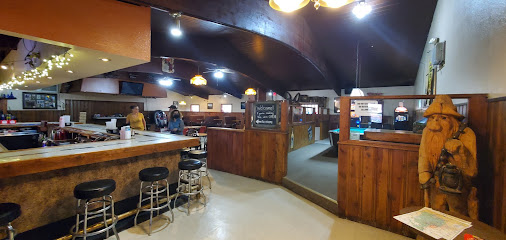
Local Phrases about Crazy Horse Memorial
-
- HelloHau
[how] - GoodbyeWopila
[woh-pee-lah] - YesHeh
[heh] - NoHaŋ
[hahn] - Please/You're welcomeAŋpetu waste
[ahn-pay-due wah-stay] - Thank youPilamaya
[pee-lah-mah-yah] - Excuse me/SorrySka
[skah] - How are you?Hečhašte kiŋ
[heh-chah-shtay keen] - Fine. And you?Wóiŋičeya. Níŋ kiŋ
[woh-ee-nee-chay-yah. neeng keen] - Do you speak English?Wíyayela kiŋ English?
[wee-yah-yay-lah keen english] - I don't understandWíyayel kiŋ hokšiče
[wee-yah-yayl keen hohk-shee-chay]
- HelloHau
-
- I'd like to see the menu, pleaseMenuža iyéčhekša, hokšíla
[meh-noo-zah ee-ye-chay-kshah, hohk-shee-lah] - I don't eat meatWasu maǧiŋ
[wah-shoo mah-gheeng] - Cheers!Sko!
[skoh] - I would like to pay, pleaseWašté waste, hokšíla
[wah-shday wah-stay, hohk-shee-lah]
- I'd like to see the menu, pleaseMenuža iyéčhekša, hokšíla
-
- Help!Aŋpetu kiŋ
[ahn-pay-due keen] - Go away!Níŋyaŋ kiŋ
[neeng-yahng keen] - Call the Police!Wíčhaša wíčha kiŋ
[wee-chah-shah wee-chah keen] - Call a doctor!Wíčhaša wóšakičhi kiŋ
[wee-chah-shah woh-shah-kee-chi keen] - I'm lostAŋpetu haŋ
[ahn-pay-due hahn] - I'm illWíčhaša kiŋ
[wee-chah-shah keen]
- Help!Aŋpetu kiŋ
-
- I'd like to buy...Ičhéyapi he iyuhaŋpi
[ee-chay-yah-pee hay ee-yuh-hahn-pee] - I'm just lookingAŋpetu haŋ
[ahn-pay-due hahn] - How much is it?Taku ke kte?
[dah-koo kay ktay] - That's too expensiveTaku skaníyela
[dah-koo skah-nee-ye-lah] - Can you lower the price?Kuŋ yuhaŋpi kiŋ iyuhaŋpi?
[koon yuh-hahn-pee keen ee-yuh-hahn-pee]
- I'd like to buy...Ičhéyapi he iyuhaŋpi
-
- What time is it?Taku kiŋ éya?
[dah-koo keen ay-yah] - It's one o'clockHupéčhuŋ
[hoo-pay-chuhng] - Half past (10)Waíyakta kiŋ (10)
[wah-ee-yah-kdah keen (10)] - MorningHinhan
[hee-hahn] - AfternoonIyéhaŋpapi
[ee-ye-hahn-pah-pee] - EveningIyéhaŋsapa
[ee-ye-hahn-sah-pah] - YesterdayIčháhaŋ
[ee-chah-hahn] - TodayŠúŋkawakíčhi
[shoon-kah-wah-kee-chee] - TomorrowApéčhaŋ
[ah-pay-chahng] - 1Hoká
[hoh-kah] - 2Núŋpa
[noong-pah] - 3Yamní
[yah-mnee] - 4Tȟáŋka
[thahn-kah] - 5Zaptȟáŋ
[zahp-thahn] - 6Šákpe
[shah-kpeh] - 7Šápta
[shahp-dah] - 8Oglála
[oh-glah-lah] - 9Wašté
[wah-shday] - 10Wíyaka
[wee-yah-kah]
- What time is it?Taku kiŋ éya?
-
- Where's a/the...?He (wí) híčhetu?
[hay (wee) hee-chay-too] - What's the address?Óta kiŋ čhaŋtétu?
[oh-tah keen chahn-tay-too] - Can you show me (on the map)?Kuŋ iyuhaŋpi kiŋ (wíčha)?
[koon ee-yuh-hahn-pee keen (wee-chah)] - When's the next (bus)?He éya waíyakta (bus)?
[hay ay-yah wah-ee-yah-kdah (bus)] - A ticket (to ....)Iyuhaŋpi (ki ....)
[ee-yuh-hahn-pee (kee)]
- Where's a/the...?He (wí) híčhetu?
History of Crazy Horse Memorial
-
The Crazy Horse Memorial was conceived by sculptor Korczak Ziolkowski in response to a request from Lakota Chief Henry Standing Bear. Ziolkowski, who had previously worked on Mount Rushmore, began the project in 1948. Chief Standing Bear's desire was to create a monumental tribute to the Native American warrior, Crazy Horse, to honor and preserve Native American heritage. Ziolkowski dedicated the rest of his life to this monumental task, forging a legacy that continues to be built upon by his family to this day.
-
Crazy Horse was a revered Lakota warrior born around 1840. He led his people in the resistance against the U.S. government's encroachment on Native American lands. Known for his bravery and tactical prowess, Crazy Horse played a crucial role in the Battle of the Little Bighorn in 1876. His leadership and dedication to preserving his people's way of life made him a symbol of Native American resilience and pride. The memorial aims to honor his legacy and educate the public about his contributions.
-
The carving of Crazy Horse Memorial is an ongoing, multi-generational project. Korczak Ziolkowski began the work in 1948 with the use of dynamite and other heavy machinery. The face of Crazy Horse was completed and unveiled in 1998, marking a significant milestone. The monument, when finished, is intended to depict Crazy Horse riding a horse and pointing into the distance. The project is funded entirely through private donations and visitor fees, eschewing government funding to maintain independence and authenticity.
-
Beyond the sculpture itself, Crazy Horse Memorial encompasses a broader mission of cultural preservation and education. The Indian Museum of North America and the Native American Educational and Cultural Center at the site aim to provide a comprehensive understanding of Native American history and culture. These institutions offer exhibits, artifacts, and educational programs that enrich visitors' knowledge and appreciation of Native American heritage. The memorial serves as a living tribute to the enduring spirit and rich traditions of Native American peoples.
-
Crazy Horse Memorial hosts a variety of events throughout the year that celebrate Native American culture and community. The annual Volksmarch, held in June, allows visitors to hike to the top of the monument, offering a unique perspective of the work in progress. The Native American Day celebration in October includes traditional dance, music, and storytelling, fostering a deeper connection between visitors and Native American traditions. These events provide opportunities for cultural exchange and promote an understanding of the ongoing significance of the memorial.
-
The completion of Crazy Horse Memorial remains a long-term goal, with continuing efforts to realize Korczak Ziolkowski's ambitious vision. The project's future phases include detailed work on the horse's head and Crazy Horse's outstretched arm. The Ziolkowski family, along with dedicated staff and volunteers, continue to work towards this monumental achievement. The memorial stands as a testament to perseverance, dedication, and the enduring importance of honoring Native American heritage for generations to come.
Crazy Horse Memorial Essentials
-
The Crazy Horse Memorial is located in the Black Hills of South Dakota, near the town of Custer. The nearest airport is Rapid City Regional Airport (RAP), approximately 50 miles away. From the airport, you can rent a car or take a shuttle service to reach the memorial. Alternatively, you can drive to Crazy Horse Memorial from major cities like Denver, Colorado (a 6-hour drive) or Sioux Falls, South Dakota (a 5-hour drive).
-
While at Crazy Horse Memorial, walking is the primary mode of transportation as you explore the visitor areas, museums, and viewpoints. For those who prefer not to walk, shuttle buses are available to take visitors closer to the mountain carving. If you plan to explore the surrounding Black Hills area, renting a car is highly recommended.
-
The official currency in the United States is the US Dollar (USD). Credit and debit cards are widely accepted at Crazy Horse Memorial, including at the gift shops, restaurants, and ticket booths. There are also ATMs available on-site if you need to withdraw cash.
-
Crazy Horse Memorial is generally a safe destination for tourists. However, as with any tourist location, it’s important to be aware of your surroundings and keep an eye on your belongings. The nearby town of Custer is also considered safe, but standard precautions should be taken, especially at night. Avoid leaving valuables in plain sight in parked cars.
-
In case of emergency, dial 911 for immediate assistance. The memorial has first aid stations and trained staff to handle minor medical issues. The nearest medical facility is Custer Regional Hospital, located about 5 miles away in the town of Custer. It's advisable to have travel insurance that covers medical emergencies.
-
Fashion: Do wear comfortable walking shoes and weather-appropriate clothing. Don't wear offensive or inappropriate attire, as the site is a place of cultural and historical significance. Religion: Do show respect for the Native American culture and heritage represented at the memorial. Public Transport: Do use the shuttle services if you don't wish to walk long distances. Greetings: Do greet staff and fellow visitors politely. A simple 'hello' or 'good day' is appreciated. Eating & Drinking: Do try the local food available at the on-site restaurant. Don't litter; use the provided trash bins.
-
To experience Crazy Horse Memorial like a local, attend the cultural events and Native American dance performances frequently held at the memorial. Take the time to visit the Indian Museum of North America on-site for a deeper understanding of the history and culture. If possible, visit during the annual Volksmarch, a popular hike that allows participants to walk up to the base of the mountain carving.
Nearby Cities to Crazy Horse Memorial
-
Things To Do in Mount Rushmore
-
Things To Do in Rapid City
-
Things To Do in Deadwood
-
Things To Do in Gillette
-
Things To Do in Pierre
-
Things To Do in Sheridan
-
Things To Do in Cheyenne
-
Things To Do in Laramie
-
Things To Do in Dickinson
-
Things To Do in Sterling
-
Things To Do in North Platte
-
Things To Do in Fort Collins
-
Things To Do in Riverton
-
Things To Do in Mandan
-
Things To Do in Bismarck







